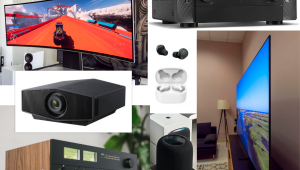DTV: Powell, CEA Press Cable Industry
The CEA's request coincided with an appearance June 11 by FCC Chairman Michael Powell at the annual convention of the National Cable Television Association (NCTA), at which he warned cable industry executives that their resistance to accommodating digital signals could invite a new era of regulation. Powell encouraged the NCTA to "find a way to become a productive partner to aid this transition—rather than its obstacle." These were especially stern words from the Bush appointee, who generally opposes governmental interference in the free market. "Don't deny programmers the fair opportunity to reach consumers," he insisted.
On the same day, the NCTA filed a statement with the FCC reiterating its opposition to so-called "dual must-carry" requirements, which would compel cable operators to carry both analog and digital TV signals until the digital transition is completed. In the statement, the NCTA stressed that the FCC lacks the authority to impose dual must-carry rules and that such regulations may be unconstitutional, a conclusion that the FCC itself reached in January. In light of the cable industry's entrenched resistance to digital, the FCC may attempt to force the issue, as was implied in Powell's comments.
NCTA executives protest that the market for DTV is still too small to create a significant revenue stream for them, but electronics manufacturers—and more recently, broadcasters—have taken the position that the successful rollout of DTV requires the cooperation of all three industries. Protesting further that present cable systems lack the bandwidth to carry both digital and analog signals, the cable industry has resisted efforts by its putative partners in the digital marketplace to find a way to accommodate digital programming.
Providing full-bandwidth pipes to viewers' homes will encourage networks and local stations to produce more digital programming, according to CEA president Gary Shapiro. "Knowing that cable systems will carry digital broadcast signals, more digital content will be developed by programmers who have been assured that cable will carry their output," Shapiro said. "Must-carry of digital broadcasts and multicasts also will spur broadcasters to create more original digital content and avoid mere simulcasting of analog programming in digital format."
























































